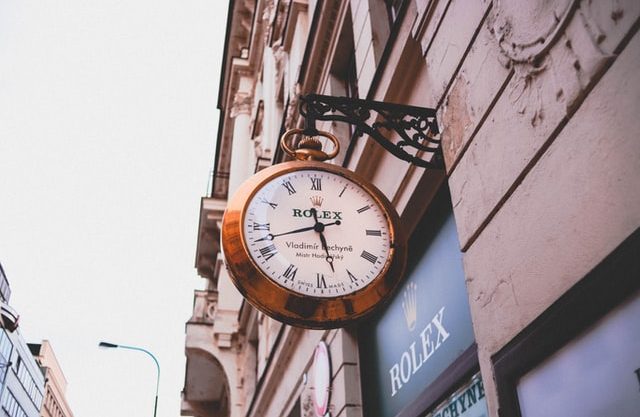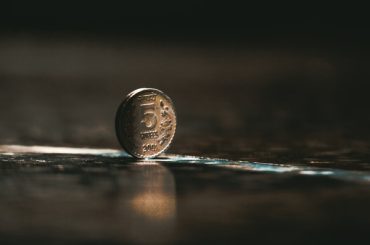Rolex. Synonymous with luxury and all things expensive! How expensive, though? To all the watch aficionados out there, you’ll probably guess it right. But for the others, let’s take a wild guess on the price tag, and you’ll still fall short of it. The most expensive Rolex to have ever sold out was Paul Newman’s Rolex Daytona costing a whopping (**drumroll**) $17.8 million!
(To put things in perspective – that’s roughly 5 Audis, 150 iPhones, a lifetime worth of Netflix subscription … well, you get the drift!)
In the digital age, when it is redundant to carry a device just to show us time, Rolex manages to command from its position while staying in style for over a century.
What’s the alluring X-factor that has made this particular Swiss brand a stand-out for generations?
How did it all start?
Rolex has always been a true innovator of its craft. In the early 1900s, pocket watches were the general norm. Wristwatches had a certain apprehension surrounding them and were generally looked down upon. They were neither accurate nor known to withstand contact with dust and water.
Despite the general opinion, Hans Wilsdorf decided to change this perception & give a new direction to watch-making altogether! Thus, Rolex was born, the first wristwatch with Chronometric Precision & both water and dust resistance, breaking the prejudice.
This became a hit, especially with the Upper Class. (Talk about boss move!)
The amount of effort that is put into making one piece is astounding (it takes one whole year to make just one watch!). Every dial is hand-crafted and each stone is hand-tested and set, to deliver exceptional quality. To ensure authenticity, they sell the watches only through their exclusive official retailers, never directly from the website.

Throughout its 100+ years of existence, Rolex consistently ensured to maintain its brand image of luxury, exuding a sense of pride & prestige to the owner. They cater to the most affluent crowd, creating a sense of exclusivity for owning one.
Brand Recognition Strategy of Rolex:
Rolex’s strategies to create brand recognition have gone hand in hand with its innovative launches since the beginning. Wilsdorf rightly understood the momentum it would gain if it partnered with the world’s most popular sports or expedition projects at the time.
In 1926, Rolex was the first to introduce a water-proof and dust-proof watch to the world in its ‘Oyster’ collection. To substantiate its claim, the very next year, they partnered with the British swimmer Mercedes Gleitze. She crossed the English Channel wearing the Rolex and emerged with it in perfect working conditions.
It created quite a buzz at the time earning the front-page news in Daily Mail. This ended up garnering attention to the brand’s credibility from wide across the world. It was also a landmark moment in branding & advertising history, as Wilsdorf popularized the concept of a testimonial with this feat.
In the 1930s, Rolex was used by the mountaineers in the Mount Everest expeditions. Once again, coming out unscathed was a reaffirmation of its superior quality that withstands the harsh weather conditions. And the very same year, The Rolex Oyster Perpetual Explorer was launched.
With decades passing, Rolex has always associated itself with the most historic events & admired personalities of the time. This includes a wide array of them including – Deep sea explorations, Golf, Formula One, Tennis Championships, Horse Racing, several Art & Cultural events., etc. Think of the coolest event in any era and there it was! The Rolex crown of gold on green splashed across them.
Eventually, this led the brand to create the recognition it wanted – Quality. Luxury. Exclusivity. Prestige. Pride.
Rolex – a brand that sells success:
In addition to establishing their presence through a great many advertisements and sponsorships, Rolex’s messaging also plays a significant role in affirming its positioning.
Whether it is an heirloom, a milestone of success, or a gift, a Rolex watch frequently becomes an emotional symbol that brings life exceptional moments.
– states their official website.
Rolex presents itself as a must-have for occasions that recognize landmark accomplishments. It does not showcase itself as a product but as a celebratory symbol of achievements & excellence.
Rolex’s advertisements don’t rattle off the technical details or emphasize how superior it is from its competitors. It shows that it does not want to be taken just as a watch but as a reward for success. The campaigns include messages like – ‘ Every Rolex tells a story; ‘A crown for every achievement’; ‘It doesn’t just tell time, it tells history.’ They address the emotional touchpoints of their target audience, thereby creating a surge of desire to own one.
Consumers’ unwavering loyalty for the brand:
Half the job is done when a brand evokes the feeling of utmost pride & joy from its owner. A strong affinity from its target audience creates a throng of hardcore loyalists for the brand. With such unwavering brand loyalty from the elites of society, Rolex hardly needs any other strategy for consumer attention.
Roger Federer to Michael Bublé (along with an impressive list of other achievers) stands by as the proud owners of a Rolex and how it has become an integral part of their milestones. (Is there anything more convincing than historical figures of the world coming forward to share their gratifying experiences of the product? Not just as a part of an endorsement deal but as a genuine user!). Rolex is considered an heirloom of the family to be passed on to future generations.
A Rolex is not just a watch. I think it’s much more than that. It stands for the values which we all hope to not only have ourselves but also to pass on to the next generation.
Grand Slam champion Ana Ivanovic states,
Not only the public endorsements from celebrities, but Rolex deciding to showcase its strong customer base by publishing the letters they’ve received since the 1950s (the pre-social media era) shows how much they’re valued amongst their users and vice-versa.
Factoring in these strategies, it is not surprising to find the brand value of Rolex staying strong to this day & age. It seems the strategy of Rolex is to showcase the timelessness (no pun intended) of the brand across multiple generations.
However, it’ll be exciting to see what’s in store for luxury watches in the future as they’ll be pushed to evolve with rapid changes continually. If history has shown us anything, it’s safe to bet that Rolex will yet again come up with something innovative to retain its crown!


















